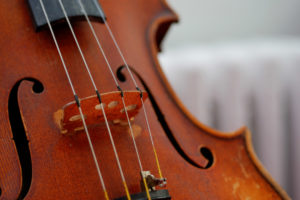The average person is distracted 47 percent of the time. That means that for almost half of our waking hours, most of us are not paying attention to the world around us. It is possible to improve your ability to pay attention, a key ingredient to mindfulness, by building skills around awareness. In this practice, you’ll learn how paying attention to your senses can help you train the mind to relate to your surroundings in a different way, and feel more connected to the present moment. Try this ten minute seated practice with Cortland Dahl.

Guided Practice: A Tour of the Senses
Led by Cortland Dahl
In this practice we’ll use the senses - what we see, hear, and feel - as supports for mindful awareness. This trains the mind to relate to these things in a different way, so you can bring a calm presence into the flow of your daily routine. Let’s give it a try.
Bring a light awareness to your body. Straighten up a bit and let your body be comfortable and loose. Now close your eyes and take a few deep breaths. As you breathe out, let your body and mind relax.
Let your breathing return to normal and bring your attention to the sensations in your body. Notice any feelings of tension, feelings of ease. Notice the feeling of movement as you breathe, and any other sensations in the body. Not trying to feel any particular way, just noticing, being curious about the sensations that are happening in the body.
Next, bring your attention to whatever sounds are present. Let that be the anchor to the present moment. You don’t need to concentrate intensely. Just notice the sound. Let it come to you.
When the mind wanders off, gently bring it back to what you’re hearing. Remember that getting distracted isn’t failure. It’s completely normal.
Now you can gently open your eyes and notice what you see. Pick something in your visual field and rest your awareness on it. Again, don’t concentrate too intensely. Let your mind be relaxed, but still alert and attentive.
For these last few moments, let go and simply be. Don’t worry about focusing on anything in particular. You don’t have to block thoughts or memories. Just sit for a few moments and rest in the flow of experience, as though you’re in a gentle river and you’re resting in the current.
Okay. That’s it. In this practice, we used the senses to build our capacity to be present, mindful and aware. You can do the same thing with any activity. What are you going to do now? Before you move on, set a clear intention to continue on to this next activity with awareness. Any activity can be used as a new opportunity to practice. The key is to practice for short moments, many times throughout your day.
Awareness. Connection. Insight. Purpose. We consider these to be four ingredients of a healthy mind. You can train yourself to improve these skills, just like you can develop any habit. This audio practice is provided by Healthy Minds Innovations (HMI), an external, affiliated nonprofit dedicated to supporting the mission of the Center for Healthy Minds. Learn more about how HMI is bringing our research to life with new and innovative programs.






